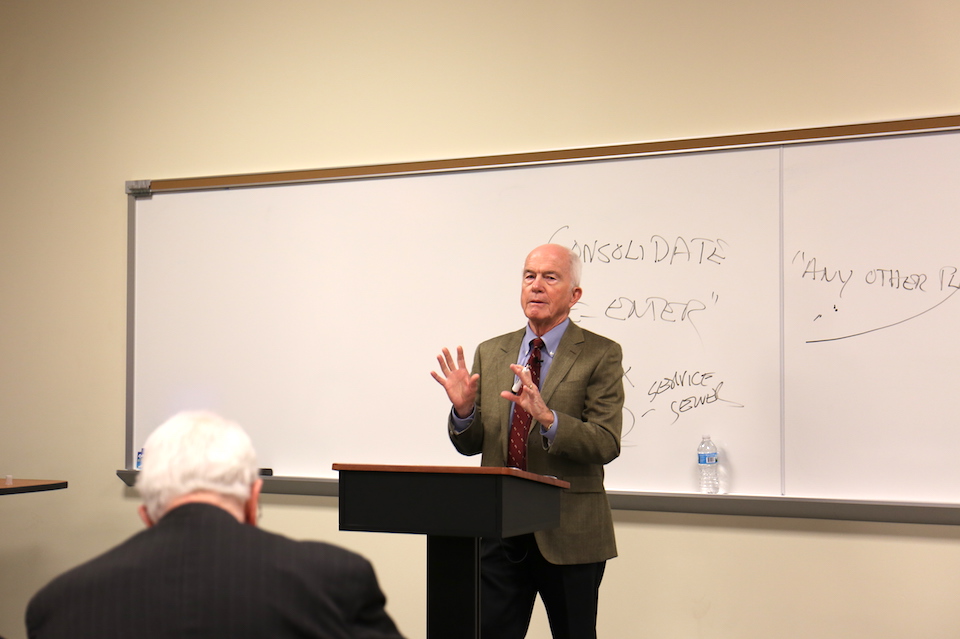Fragmented St. Louis: The Consequences of Dividing a City, a County and Their Services
“Why did the protests in Ferguson following the death of Michael Brown in August 2014 last so long compared to deaths of other unarmed blacks by white officers in Cleveland, New York and North Charleston?” Roger Goldman, J.D., professor of law at Saint Louis University, asked a packed house last Friday.
“The major difference was the anger of many residents of the 90 St. Louis County municipalities at the treatment by the 57 St. Louis County police departments,” Goldman told the audience–comprising community members and SLU students, faculty and staff–during a two-hour discussion about the city-county split and the resulting social and economic repercussions.
With tiny taxpayer bases and flat economic growth, some local governments rely on petty fines to meet their budgets; a practice that fundamentally alters the relationship between government and its citizens.
“These are obviously failing departments; they cannot protect and serve their constituents. In fact, they prey on them. We cannot morally permit [them] to continue to exist.”
Roger Goldman, J.D.
Joining Goldman as featured speakers at the event were Peter Salsich, J.D., and Stephen Hanlon of SLU’s law school and Daniel Monti, Ph.D., representing sociology and anthropology. “Saint Louis is regarded as a hyper-segregated city. You can't understand Michael Brown unless you understand that,” Hanlon added.
Goldman went on to tell the story of “his” Ferguson--or awakening event to the city’s systemic policing problem. It happened in 1974, when a cash-poor police department knowingly hired an officer unfit for duty; the officer, Lt. Joseph Sorbello, then went on to fatally shoot an unarmed suspect in the back.
“The lesson learned from Sorbello is that the problem of unfit officers cannot be addressed solely by local municipalities and police departments,” Goldman said. “We accredit school districts; somehow, we need to accredit police departments. We need to get this right.”
The event, “History of Fragmented Government in St. Louis and the Consequences for Criminal Justice and Education,” was organized by the Standing Diversity Committee at SLU’s College for Public Health and Social Justice.
Find live tweets from the event #FragmentedGov.
###
Published: February 17, 2017
CPHSJ Communications
About the College for Public Health and Social Justice
The Saint Louis University College for Public Health and Social Justice is the only academic unit of its kind, studying social, environmental and physical influences that together determine the health and wellbeing of people and communities.
It also is the only accredited school or college of public health among nearly 250 Catholic institutions of higher education in the United States. Guided by a mission of social justice and focus on finding innovative and collaborative solutions for complex health problems, the College offers nationally recognized programs in public health, social work, health administration, applied behavior analysis, and criminology and criminal justice.
